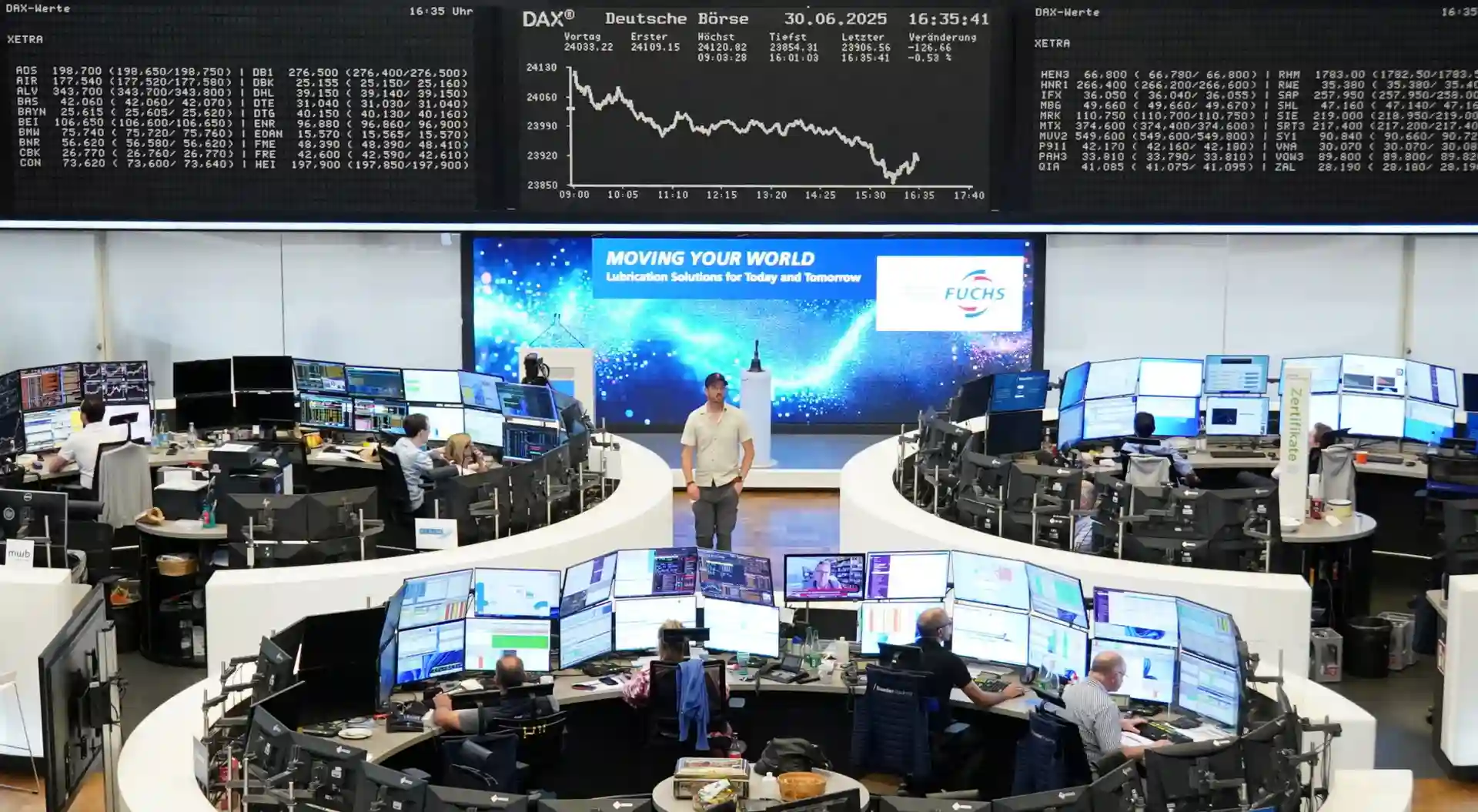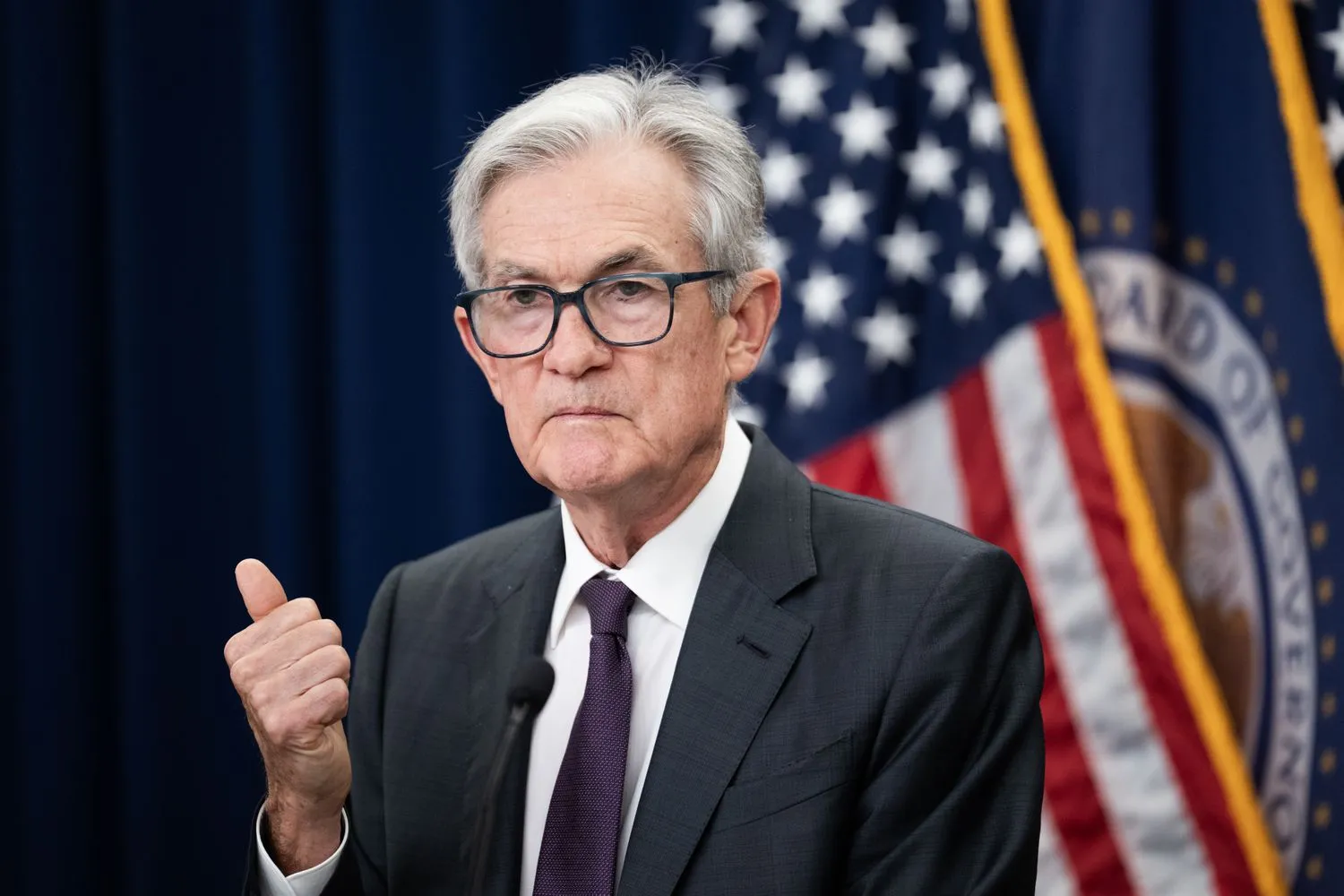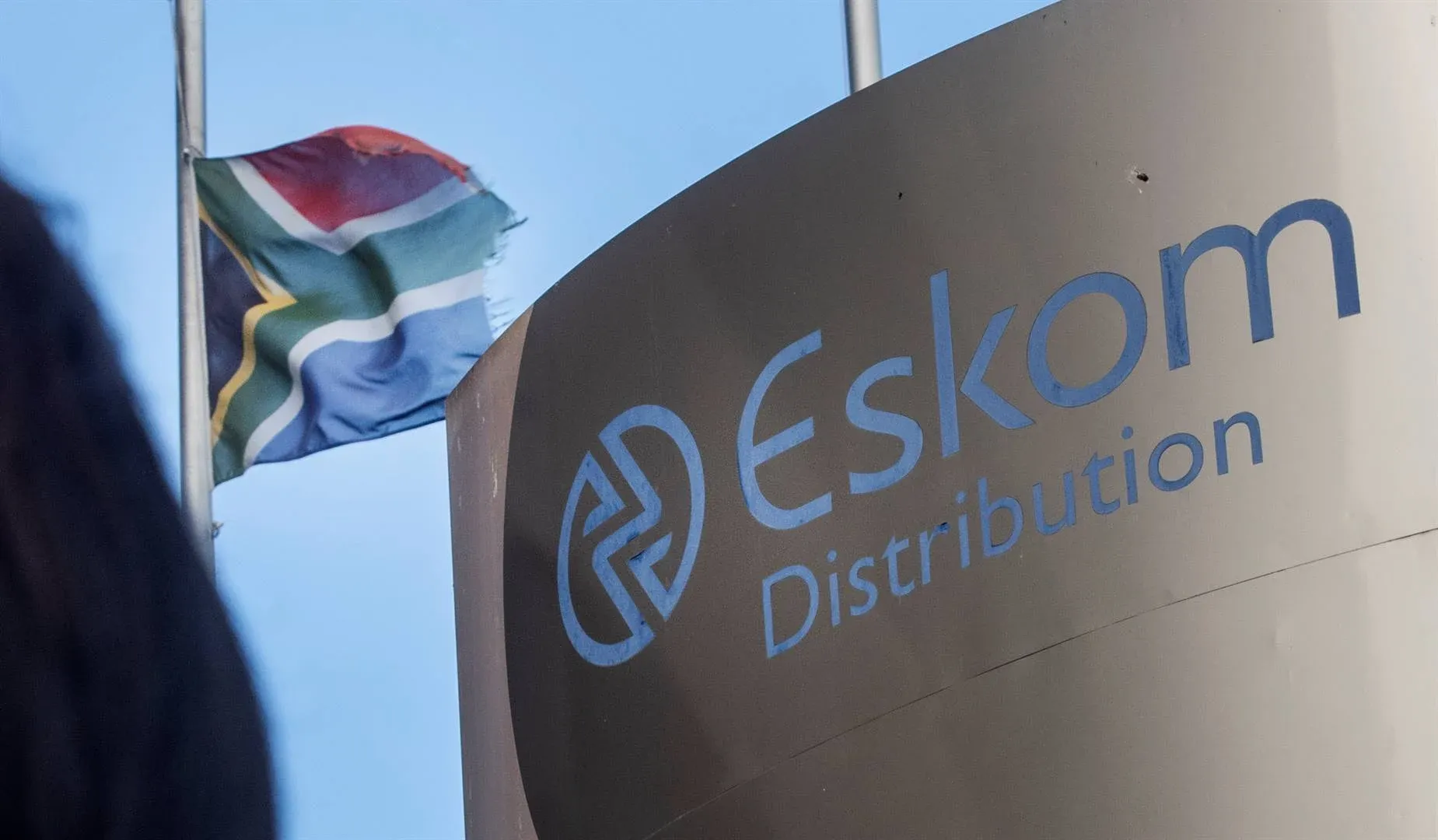The European Central Bank (ECB) finds itself navigating a precarious economic landscape, caught between a strengthening euro and the looming threat of punitive U.S. tariffs. At the ECB’s annual Forum on Central Banking in Sintra, Portugal, two prominent policymakers issued stark warnings on Tuesday, highlighting the potential “hit” from a further appreciation of the euro on an already weak Eurozone economy. This delicate balancing act underscores the complex challenges facing central bankers as they strive to maintain price stability while supporting growth amidst an increasingly uncertain global environment.
The euro has experienced a significant surge against the U.S. dollar, climbing some 9% since April and a notable 14% since the start of the year, currently trading at $1.18. This appreciation is largely attributed to investors, spooked by the unpredictable economic policies emanating from U.S. President Donald Trump’s administration, warming up to the European Union’s newfound military and industrial ambitions. However, for the ECB, a strong currency presents a mixed blessing: while it makes imports cheaper, potentially easing inflationary pressures, it simultaneously renders Eurozone exports more expensive, threatening to dampen economic growth.
Latvian central bank governor Martins Kazaks articulated the gravity of the situation, stating, “If there is a 10% tariff plus a 10%-plus appreciation of the exchange rate, this is large enough to affect export dynamics.” His comments come as EU officials brace for the imposition of a 10% tariff on goods exported to the United States, a baseline assumption as difficult negotiations with the Trump administration continue ahead of a critical July 9 deadline. Adding to the concern, ECB Vice-President Luis de Guindos indicated a clear “pain threshold” for the central bank, suggesting that while the euro’s rise up to $1.20 could be tolerated, anything higher would be “much more complicated.”
The Euro’s Unsettling Ascent: Geopolitics and Market Dynamics
The recent appreciation of the euro against the dollar is not merely a reflection of conventional economic fundamentals; it is deeply intertwined with prevailing geopolitical currents and shifting market sentiments. The 9% surge since April and the 14% year-to-date increase highlight a significant re-evaluation of currency strength by global investors.
Driving Factors Behind the Euro’s Rise:
- Trump’s Unpredictable Policies: The return of a protectionist stance from the U.S. administration under President Trump has introduced considerable uncertainty into global trade and investment flows. His administration’s approach, characterized by the imposition of “reciprocal tariffs” and a willingness to challenge established trade norms, tends to create volatility in financial markets. Investors, seeking stability amidst this unpredictability, may view the euro as a relatively safer haven, particularly if the U.S. dollar’s value is perceived to be at risk due to trade disputes or domestic policy shifts. The concept of “reciprocal tariffs” often implies a tit-for-tat escalation, making other major currencies, like the euro, appear more stable by comparison.
- EU’s Strategic Ambitions: Beyond reacting to U.S. policy, the European Union has been actively pursuing a path toward greater “strategic autonomy.” This ambition, particularly in defense and industrial policy, is gaining traction. Following geopolitical events, there has been a renewed push for increased European defense spending, a strengthening of the EU’s industrial base, and a drive for greater self-reliance in critical sectors like technology and energy. This collective resolve and investment, aimed at making Europe more resilient and independent, can enhance investor confidence in the Eurozone’s long-term stability and economic prospects, thereby supporting the euro’s value. This includes initiatives to boost domestic production, secure supply chains, and reduce dependencies on external powers, all of which contribute to a perception of a more robust and self-sufficient economic bloc.
The “Mixed Blessing” Paradox for the ECB:
While a stronger currency might seem like a sign of economic health, for a central bank like the ECB, which is mandated to maintain price stability and support economic growth, it presents a complex dilemma.
- Impact on Exports: A stronger euro makes Eurozone goods and services more expensive for international buyers. This directly impacts the competitiveness of key export-oriented economies within the bloc, such as Germany (known for its machinery and automotive industry), France (luxury goods, aerospace), and Italy (fashion, specialized machinery). When exports become pricier, demand can fall, leading to reduced production, lower revenues for companies, and potentially job losses. This is particularly concerning for the Eurozone, which relies heavily on exports for its economic vitality. As Kazaks noted, a 10% tariff combined with a 10%+ euro appreciation creates a “double whammy” for exporters.
- Impact on Imports and Inflation: Conversely, a stronger euro makes imports cheaper. This can be beneficial for consumers as it reduces the cost of imported goods, including vital raw materials and energy. Cheaper imports directly contribute to lower inflation. While the ECB aims for a 2% inflation target, a rapid and sustained fall in import prices due to currency strength could push inflation below target, complicating the central bank’s efforts to manage price stability. This is especially relevant given the Eurozone’s recent history of battling low inflation.
The Eurozone Economy: A Fragile Recovery Under Threat
The context for the ECB’s concerns is a Eurozone economy that is only just beginning to find its footing after a challenging period. The bloc’s manufacturing sector, in particular, has been struggling to emerge from a prolonged slump.
The Recent Slump (2022-2024):
The Eurozone’s economy experienced a significant downturn from 2022 to 2024, largely driven by a confluence of factors:
- Energy Crisis: The surge in energy prices, particularly natural gas, following geopolitical events, severely impacted energy-intensive industries and consumer purchasing power.
- Supply Chain Disruptions: Lingering global supply chain issues from the pandemic continued to hamper production and increase costs.
- High Inflation: The rapid rise in inflation forced the ECB to embark on an aggressive monetary tightening cycle, which cooled economic activity.
Signs of Recovery (and its fragility):
Recent data suggests a tentative recovery, but it remains fragile and uneven across member states.
- Manufacturing PMI: The HCOB Eurozone Manufacturing Purchasing Managers’ Index (PMI), a key indicator of factory activity, edged up to 49.5 in June from 49.4 in May, reaching its highest level since August 2022. While this marks a 34-month high, it remains below the critical 50.0 threshold, which separates expansion from contraction. This indicates that while the pace of decline has slowed, the manufacturing sector is still broadly contracting.
- Output and Orders: Encouragingly, the manufacturing output index remained in expansion territory (50.8, though down from 51.5 in May), marking the fourth consecutive month of slight production expansion. Crucially, the sub-index measuring new orders nudged up to 50.0, effectively ending a 37-month period of decline. Export orders also stopped falling for the first time since March 2022, offering a positive signal for future production.
- Country-Specific Performance: The recovery is not uniform. Ireland and Greece have shown the strongest improvements in manufacturing conditions, with PMI readings above 50. Spain and the Netherlands also registered strengthening performances. In contrast, Austria, Italy, and France continue to experience faster declines in manufacturing conditions. Germany, the Eurozone’s largest economy and industrial powerhouse, saw its manufacturing PMI reach 49.0, its highest in nearly three years, but still indicating contraction. The performance of Germany is particularly crucial; as Hamburg Commercial Bank Chief Economist Cyrus de la Rubia noted, if Germany enters the growth zone, it could provide a significant boost to its neighbors, given its role as their most important export destination.
- Business Confidence: Despite the mixed picture, business optimism continues to recover, reaching its highest level since February 2022. German manufacturers, in particular, are optimistic about future production prospects, partly due to expectations of infrastructure spending and a potential U.S.-EU trade deal.
This nascent recovery, however, is highly vulnerable to external shocks. The combined pressure of a strong euro and potential U.S. tariffs could easily derail the fragile momentum, pushing the Eurozone back into a deeper economic slowdown.
The Looming Shadow of U.S. Tariffs: A Threat to Global Trade
The warnings from ECB policymakers are amplified by the very real threat of escalating trade tensions with the United States. The Trump administration’s trade policy, characterized by a protectionist “America First” approach, has already seen the imposition of significant tariffs and the threat of more to come.
Context of U.S. Trade Policy:
During his second presidency, Donald Trump has enacted a series of steep protective tariffs. From January to April 2025, the average effective U.S. tariff rate rose from 2.5% to an estimated 27%, the highest level in over a century. This broad tariff package includes a baseline 10% tariff on virtually all imports globally, with additional country-specific tariffs calculated based on bilateral trade balances.
Specific Tariffs and Key Dates:
- Steel and Aluminum: On March 12, 2025, the U.S. imposed 25% tariffs on all steel and aluminum imports, later expanding to include empty aluminum cans and canned beer. These measures eliminated previous exemptions and raised the aluminum tariff from 10% to 25%. On May 30, 2025, Trump even announced a doubling of tariffs on steel and aluminum imports to 50% from June 4.
- Automobiles: A significant concern for the Eurozone, particularly Germany, is the 25% tariff imposed on all imported cars from April 3, 2025, including those from Mexico and Canada. This directly impacts highly integrated supply chains and major European automotive manufacturers.
- The July 9 Deadline: The Trump administration announced a 90-day pause on nearly all country-specific reciprocal tariffs (excluding China) on April 9, 2025, reducing these to the 10% baseline. This pause was intended to allow for negotiations with trading partners. However, this suspension is set to expire on July 9, 2025. If no new bilateral trade agreements are reached by this deadline, these higher country-specific tariffs will automatically go back into effect, significantly increasing costs for goods imported into the U.S.
Impact on the Eurozone:
The imposition of these tariffs, especially if they escalate, poses severe risks to the Eurozone economy:
- Direct Trade Effects: Tariffs directly increase the cost of Eurozone exports to the U.S., making them less competitive. Estimates suggest substantial job losses, potentially 8,000-10,000 jobs per €1 billion reduction in exports.
- Sectoral Vulnerability: Key Eurozone sectors heavily reliant on exports to the U.S., such as the automotive industry, machinery, and pharmaceuticals, would be particularly hit. Germany, as a major exporter, is identified as one of the hardest-hit large industrial economies by these tariffs.
- Supply Chain Disruption: Tariffs can disrupt complex global supply chains, forcing companies to reconfigure production, source materials from alternative (and potentially more expensive) suppliers, and absorb higher costs, which could ultimately be passed on to consumers.
- Business Confidence: The uncertainty surrounding trade policy can deter investment and hiring decisions, further dampening economic activity.
- Retaliation and Trade Wars: The EU has prepared a list of retaliatory tariffs, raising the specter of a full-blown trade war. Such a scenario would further depress global trade, harm economic growth, and increase inflation in all involved economies. The EU’s difficult position is compounded by the need to appear firm while seeking a stable trading relationship.
ECB’s Monetary Policy Dilemma: Navigating the Trade-Offs
Against this backdrop of a fragile economic recovery and escalating trade tensions, the ECB faces a complex and delicate monetary policy challenge. Its primary objective, as stated in its updated monetary policy strategy (last updated on June 30, 2025), is to maintain price stability by aiming for a symmetric 2% inflation target over the medium term. This symmetry means the Governing Council considers both negative and positive deviations from the target as equally undesirable.
The Rate-Cutting Cycle and the July Pause:
The ECB has been in a rate-cutting cycle, having reduced interest rates eight times in the past year. This aggressive easing was a response to inflation easing towards its 2% target, following a period of high inflation in 2022-23. The latest flash reading for Eurozone inflation in June came in exactly at 2%, a positive sign for the central bank. Furthermore, an ECB survey indicates that consumers, who were significantly impacted by the cost-of-living crisis, are now paring back their expectations for future price growth, which is crucial for anchoring inflation expectations around the target.
However, the ECB has signaled a pause in its rate-cutting streak for July. This decision reflects a cautious approach, acknowledging that while inflation is at target, the economic outlook is clouded by external risks.
The “Pain Threshold” and Policy Limits:
The comments from central bank officials at the Sintra Forum underscore the limits of monetary policy in addressing non-monetary shocks like trade wars and currency strength driven by external factors.
- Martins Kazaks’ Warning: His explicit mention of a “10% tariff plus a 10%-plus appreciation of the exchange rate” as “large enough to affect export dynamics” highlights the cumulative impact of these external pressures. Such a scenario could significantly undermine the Eurozone’s economic recovery, even if inflation remains at target.
- Luis de Guindos’ Threshold: The ECB Vice-President’s assertion that the central bank could ignore the euro’s rise up to $1.20 but not higher is a clear signal of a “pain threshold.” Beyond this level, the negative impact on exports and economic growth would become too significant to disregard. His statement that an additional rate cut is “not going to help the economy,” which instead needs “certainty on trade and other policies,” is particularly telling. It implies that the current economic fragility is not primarily a monetary issue that can be solved by lower interest rates. Instead, it requires clarity and stability in trade relations and broader government policies. This perspective suggests that the ECB views its role as supporting the economy within its mandate, but cannot counteract fundamental structural or geopolitical headwinds with monetary tools alone.
- Gediminas Simkus’ Prudence: The Lithuanian governor’s comment that a move, if any, is “more likely towards the end of the year” and that he doesn’t know if they’ll have all the necessary information by September, emphasizes the ECB’s data-dependent approach. Policymakers need to carefully assess the impact of ongoing trade negotiations, evolving economic data (like PMI, industrial production, and inflation breakdowns), and broader geopolitical developments before making further interest rate decisions. This cautious stance aims to avoid premature policy moves that could either reignite inflationary pressures or fail to effectively stimulate an economy facing non-monetary constraints.
The ECB’s Governing Council also recently updated its monetary policy strategy on June 30, 2025, emphasizing agility and flexibility to respond to major changes in the inflation environment. This includes acknowledging structural shifts like geopolitical fragmentation and the increasing use of AI, which suggest an uncertain and potentially more volatile inflation environment. The strategy confirms that all monetary policy tools remain available and will be used with proportionality and flexibility. The first regular monetary policy meeting applying this updated strategy will be held on July 23-24, 2025.
Voices from Sintra: A Consensus on Caution
The ECB’s annual Forum on Central Banking in Sintra, Portugal, is a crucial platform where central bankers, academics, and financial experts convene to discuss pressing economic issues. The statements from Kazaks, de Guindos, and Simkus reflect a shared cautious outlook within the Governing Council.
Martins Kazaks, known for his pragmatic approach, underscored the tangible threat to export dynamics from the combined forces of tariffs and currency strength. Luis de Guindos, as the Vice-President, provides a broader institutional perspective, and his explicit “threshold” for the euro’s value serves as a clear warning to markets about the ECB’s tolerance levels. Gediminas Simkus, representing one of the smaller Eurozone economies, brings a perspective that emphasizes the need for comprehensive data before committing to further policy adjustments, reflecting a broader consensus on data dependency.
Their collective message is one of vigilance: the ECB has done much of the heavy lifting in terms of interest rate adjustments to bring inflation to target. Now, the ball is partly in the court of trade policymakers and global political leaders to provide the certainty and stability that the Eurozone economy desperately needs to sustain its fragile recovery.
Conclusion: A Tightrope Walk for the ECB
The European Central Bank faces a formidable challenge in the coming months. The strengthening euro, driven by external factors including U.S. trade policy and the EU’s own strategic shifts, presents a significant headwind to the Eurozone’s export-driven economy. The looming July 9 deadline for U.S. tariffs adds another layer of complexity, threatening to disrupt trade, increase costs, and potentially trigger retaliatory measures.
While Eurozone inflation has successfully returned to the ECB’s 2% target, and manufacturing shows nascent signs of recovery, the overall economic picture remains fragile. The central bank’s policymakers are signaling that the era of aggressive rate cuts is largely over, and that further monetary stimulus may offer diminishing returns for an economy grappling with non-monetary shocks. The emphasis is now on external policy certainty and structural reforms to truly bolster economic growth.
The delicate balancing act for the ECB involves carefully monitoring inflation, assessing the impact of currency movements and trade tensions, and being prepared to respond with agility. The coming months will be crucial in determining whether the Eurozone can navigate these powerful external forces to achieve a sustained and robust recovery, or if the combined pressure of a strong euro and trade protectionism will push it back into deeper economic malaise. All eyes will remain on trade negotiations, incoming economic data, and the ECB’s subsequent policy communications.
Ready to take your career to the next level? Join our dynamic courses: ACCA, HESI A2, ATI TEAS 7 , HESI EXIT , NCLEX – RN and NCLEX – PN, Financial Literacy!🌟 Dive into a world of opportunities and empower yourself for success. Explore more at Serrari Ed and start your exciting journey today! ✨
photo source: Google
By: Montel Kamau
Serrari Financial Analyst
2nd July, 2025
Article, Financial and News Disclaimer
The Value of a Financial Advisor
While this article offers valuable insights, it is essential to recognize that personal finance can be highly complex and unique to each individual. A financial advisor provides professional expertise and personalized guidance to help you make well-informed decisions tailored to your specific circumstances and goals.
Beyond offering knowledge, a financial advisor serves as a trusted partner to help you stay disciplined, avoid common pitfalls, and remain focused on your long-term objectives. Their perspective and experience can complement your own efforts, enhancing your financial well-being and ensuring a more confident approach to managing your finances.
Disclaimer: This article is for informational purposes only and does not constitute financial advice. Readers are encouraged to consult a licensed financial advisor to obtain guidance specific to their financial situation.
Article and News Disclaimer
The information provided on www.serrarigroup.com is for general informational purposes only. While we strive to keep the information up to date and accurate, we make no representations or warranties of any kind, express or implied, about the completeness, accuracy, reliability, suitability, or availability with respect to the website or the information, products, services, or related graphics contained on the website for any purpose. Any reliance you place on such information is therefore strictly at your own risk.
www.serrarigroup.com is not responsible for any errors or omissions, or for the results obtained from the use of this information. All information on the website is provided on an as-is basis, with no guarantee of completeness, accuracy, timeliness, or of the results obtained from the use of this information, and without warranty of any kind, express or implied, including but not limited to warranties of performance, merchantability, and fitness for a particular purpose.
In no event will www.serrarigroup.com be liable to you or anyone else for any decision made or action taken in reliance on the information provided on the website or for any consequential, special, or similar damages, even if advised of the possibility of such damages.
The articles, news, and information presented on www.serrarigroup.com reflect the opinions of the respective authors and contributors and do not necessarily represent the views of the website or its management. Any views or opinions expressed are solely those of the individual authors and do not represent the website's views or opinions as a whole.
The content on www.serrarigroup.com may include links to external websites, which are provided for convenience and informational purposes only. We have no control over the nature, content, and availability of those sites. The inclusion of any links does not necessarily imply a recommendation or endorsement of the views expressed within them.
Every effort is made to keep the website up and running smoothly. However, www.serrarigroup.com takes no responsibility for, and will not be liable for, the website being temporarily unavailable due to technical issues beyond our control.
Please note that laws, regulations, and information can change rapidly, and we advise you to conduct further research and seek professional advice when necessary.
By using www.serrarigroup.com, you agree to this disclaimer and its terms. If you do not agree with this disclaimer, please do not use the website.
www.serrarigroup.com, reserves the right to update, modify, or remove any part of this disclaimer without prior notice. It is your responsibility to review this disclaimer periodically for changes.
Serrari Group 2025












